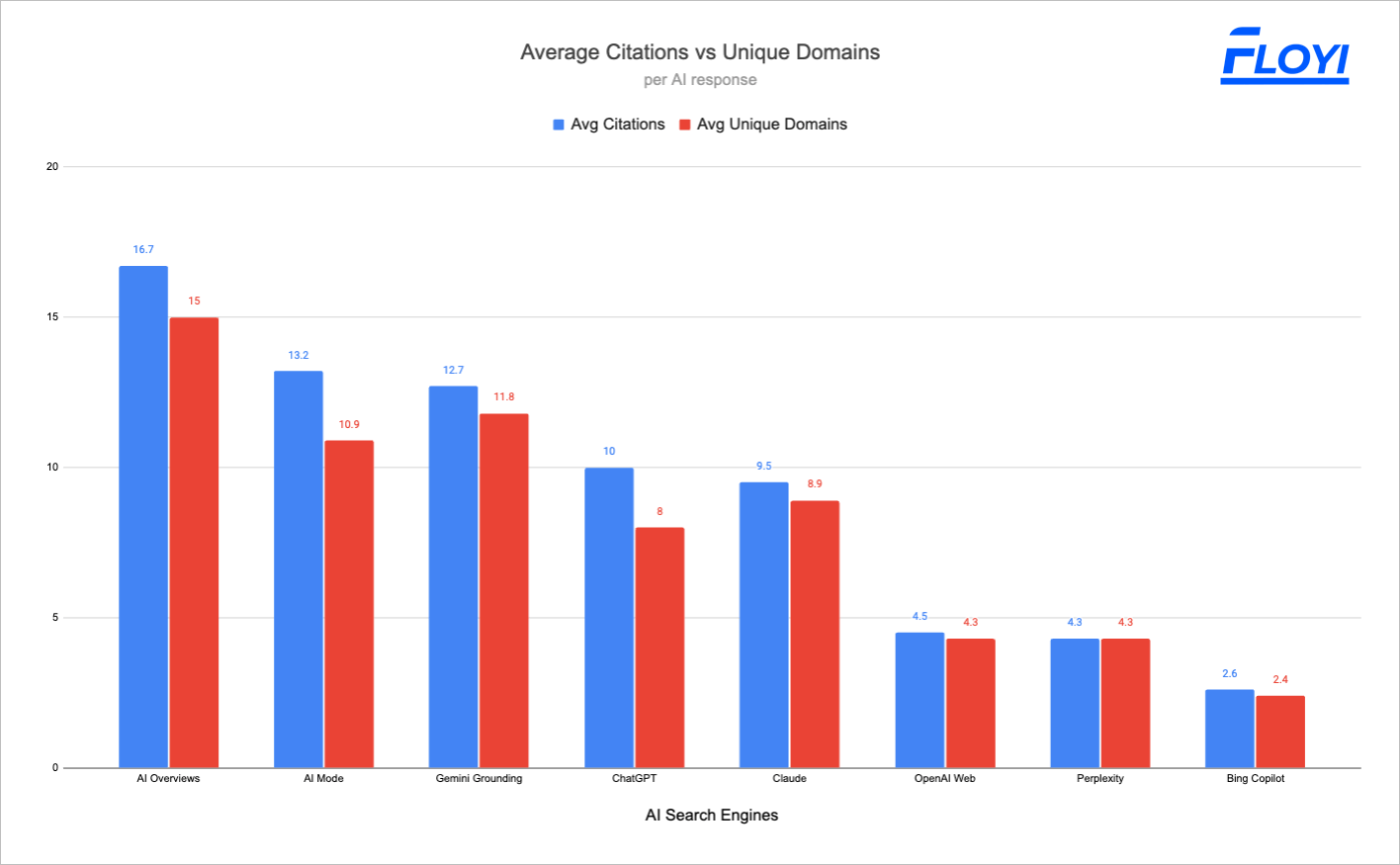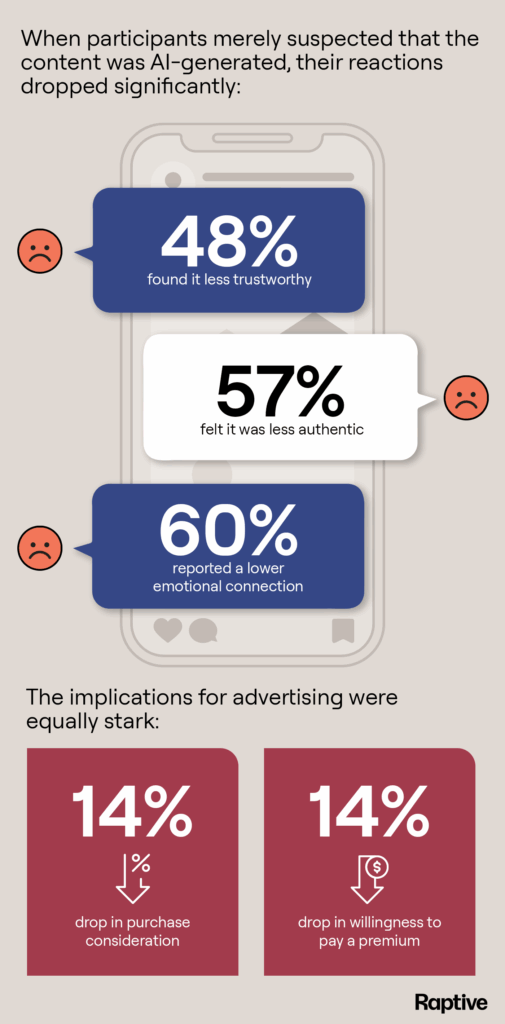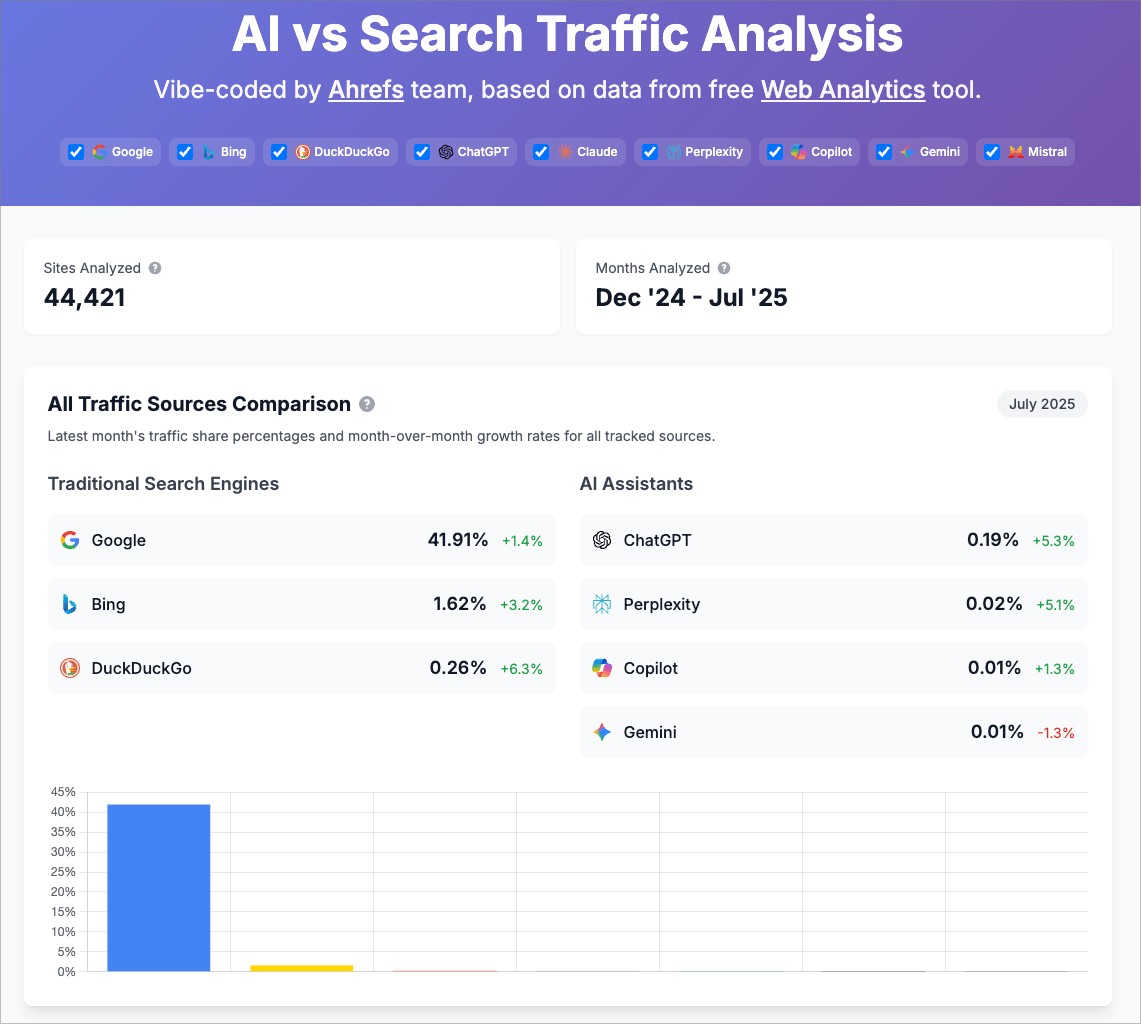- Digital Surfer
- Posts
- Why AI Search Engines Keep Citing the Same Sites
Why AI Search Engines Keep Citing the Same Sites
Wave 253; Topical Authority Matters; 101 Real-World Gen AI Uses; AI Mode Agents; AI Favors AI Writing; Google Verified Badges; Meta x Midjourney; and Much More!
FIRST …
AI search engines are showing their cards.
AI Mode averages 13.2 citations per answer, but only 10.9 are unique domains.
ChatGPT delivers 10 citations, just 8 unique.
Gemini comes closer to balance with 12.7 citations and 11.8 unique.
And AI Overviews leads everyone, averaging 16.7 citations and 15 unique domains.
What does that tell us? Engines are not just pulling from random results. They lean on the sites with topical authority - the experts in their vertical.
The sites with enough depth to earn multiple mentions in the same response.
That is the real game.
The first step is getting cited.
The next step is being cited more than once in the same answer.
That is when authority compounds, and your brand becomes unavoidable.
How do you get there? You build a topical map.
Start with your core topics as anchors.
Surround them with content clusters.
Organize everything in hierarchies that prove depth and logical coverage.
Use internal linking to connect it all together and tell a story.
Topical maps are not just strategy. They are the blueprint for becoming the source engines trust, cite, and repeat.
It is not tracking rankings or counting citations. t is analyzing AI search responses across ten engines to identify what matters.
That analysis turns into a content blueprint showing you what to create, what to improve, and where to focus so your site becomes the one engines cite.
Floyi does not track.
Floyi builds and analyzes.
That is how you create topical authority in AI search.

AD
An Entire Month of Videos Before Lunch
Tired of the post-every-day grind?
Syllaby.io automates your entire content workflow. All you need is a topic—our AI does the rest.
✅ Get daily viral content ideas
✅ Auto-generate scripts tailored to your niche
✅ Instantly create faceless videos
✅ Bulk schedule across all your platforms
Syllaby is perfect for coaches, creators, and marketers who want to grow without showing their face or spending hours editing.
SEO + GEO
Glenn Gabe analyzes the 69–72% drop in Wirecutter’s Google visibility. Was it Google’s unannounced reviews updates quietly reshaping rankings? The “starkly different” algorithm treating Wirecutter’s directory apart from the New York Times? Or is Google rewarding niche publishers with deep vertical expertise over broad review sites? Gabe’s analysis suggests all three could be in play.
My Take: The vertical expertise of niche publishers is a key insight. The smart money is moving back into affiliate marketing (if it ever left), especially with AI Search Engines citing more diverse sources. We’re already seeing a boom in vertical reviews, especially from SaaS - see how ChatGPT cites multiple articles from Floyi, TopicalMap.com and my personal blog on the best topical map tools (the link will generate the ChatGPT search). It’s only a matter of time before the “gurus” start hyping affiliate sites again.
FYI - I created the articles based on the content blueprints from Floyi’s AIRS Analyzer. It analyzed 8 AI search engines and Google/Bing SERPs to come up with the brief to follow. All articles were being cited 2 days after publishing 😄
Metehan Yesilyurt discovers configuration files from ChatGPT 5 that show how your content gets pulled, filtered, and ranked. Freshness scoring is always on, meaning older guides risk losing ground to newer updates. Query intent detection pushes you to make content that clearly signals whether it is a how-to, comparison, or definition. Vocabulary search rewards precise industry terminology, while the reranker reshuffles results based on authority signals.
My Take: It’s a great look at many of the configuration parameters used. But what we don’t know is the weight of the parameters and how they’re used for citation purposes. Remember the Google algorithm internal doc leak last year? Same thing. Lots of parameters, but no weights and formulas, so we can only see what’s being considered for ranking.
Google unveiled major upgrades to AI Mode including new agentic features that can now secure restaurant reservations, soon expanding to service appointments and event tickets. AI Mode also gets smarter with personalization, using your past interactions in Search and Maps to suggest options that match your tastes. A share function lets friends and family collaborate directly inside AI Mode responses. Access is also expanding to 180 new countries.
SEO + GEO Ripples
John Mueller and Martin Splitt tackle one of the most common performance tactics: lazy loading. Martin explains that lazy loading helps by deferring non-critical resources, saving bandwidth and boosting Core Web Vitals, especially Largest Contentful Paint. But he warns that misusing it on above-the-fold images can hurt performance rather than help. For SEO, the key is making sure Googlebot can see the actual src attributes, not hidden in custom scripts. Their practical tip is to test in Search Console’s URL Inspection Tool and confirm rendered HTML includes everything you want indexed. Transcript here if you prefer.
AI
Raptive’s new study of 3,000 U.S. adults delivers a blunt warning: audiences punish content they believe is AI-written, even when it is not. Suspicion alone erodes trust, authenticity, and ad performance. That perception spreads to brands whose ads run alongside the content, dragging down credibility like ice cream tossed in the trash. The takeaway is to lean into human stories, lived expertise, and emotional connection. Brand safety now means avoiding even the whiff of artificiality. Your credibility is the moat AI cannot cross, and it is exactly what advertisers will pay for.
Google Cloud has compiled 101 technical blueprints showing how to pair real-world business problems with the right AI stack. From retail personalization to fraud detection, healthcare optimization, and hyper-targeted marketing, each blueprint lays out the challenge, the recommended tools, and the architecture to implement.
My Take: It’s put out by Google, so their tech stacks are all Google, but you can use these patterns as starting points to save time, reduce risk, and accelerate projects and SOPs.
Iain Martin and Emily Baker-White reveal how Elon Musk’s xAI quietly made more than 370,000 Grok chatbot conversations public and searchable on Google. That means everything from personal medical queries to uploaded spreadsheets - and even explicit instructions on drugs, malware, and bombs - ended up indexed. The catch? Users thought they were just sharing with friends. The takeaway is clear: if your product has a “share” button, disclosure must be explicit and airtight. Otherwise, you’re not just risking user trust, you’re handing opportunists an SEO playground to manipulate search visibility at scale.
Walter Laurito, Benjamin Davis, Jan Kulveit and others published a groundbreaking study in PNAS showing that LLMs consistently prefer AI-written content over human-written text. Tested across product ads, paper abstracts, and movie summaries, the models displayed a strong bias toward machine writing, even when the quality signals were equal. As LLMs are embedded in marketplaces, search, and decision-making, will humans may face an invisible “gate tax” unless they use AI assistance? The authors warn this could deepen the digital divide and unfairly disadvantage human creators unless mitigations are built into systems. Some of the key takeaways:
LLMs favored AI-written product descriptions 89% of the time vs. 36% for humans
For abstracts, LLMs preferred AI 78% vs. 61% for humans
For movie summaries, LLMs preferred AI 70% vs. 58% for humans
GPT-4 showed the strongest AI preference in product and movie tests
First-item bias inflated some results, with GPT-4 choosing the first option 73% of the time
Human evaluators showed weaker, mixed preferences across datasets
Bias persisted across GPT-3.5, GPT-4, Llama, Mixtral, and Qwen models
Authors call this “AI–AI bias” with real-world economic implications
Conservative scenario: humans must pay for AI tools to avoid exclusion
Speculative scenario: LLMs may segregate commerce, marginalizing human participants
AI Ripples
ChatGPT Go is a new low-cost subscription plan for users in India only. It comes with 10x higher message limits, 10x more image generations, 10x more file uploads, and 2x longer memory compared with the free tier for ₹399/month.
Google announced Gemini for Home, the AI upgrade that will replace Google Assistant on Nest speakers and displays. Gemini handles nuanced requests, from “play the song of the year in 1990” to “dim the lights everywhere except my bedroom.” With Gemini Live, you can cook meals with real-time guidance, troubleshoot appliances, or co-create bedtime stories. Voice search going to become a hot topic again? 🤔
Jay Peters reports that Meta has struck a deal with Midjourney to license its “aesthetic technology” for future AI models and products. Alexandr Wang, Meta’s new chief AI officer, says the partnership includes direct collaboration between research teams, not just a plug-and-play integration. Expect Midjourney’s tech to power image generation across Meta’s ecosystem, from the Meta AI app feed to Facebook, Instagram, and WhatsApp.
MARKETING
Kevin Indig breaks down how Google’s AI Overviews represent a textbook case of product cannibalization. Just as Apple killed the iPod with the iPhone and Netflix pivoted from DVDs to streaming, Google is eating its own core product to survive the AI era. The challenge - AI Mode drives visibility but not monetization, while engagement falls. For brands, don’t fear cannibalization, use it strategically. Audit your product lines, distinguish between full and partial cannibalization, protect high-revenue segments, and test disruption where the stakes are lower. Done right, self-cannibalization becomes growth, not decline.
In October 2025, Google will streamline Local Services Ads by replacing multiple trust signals with one clear badge: Google Verified. This single badge replaces Google Guaranteed, Google Screened, License Verified, and the Money Back Guarantee. Eligible businesses that complete verification will automatically display the new badge on their profiles, along with details of which checks they passed. The badge will also appear dynamically in ads when it helps users make faster decisions. Read more about how it works in their local services help docs.
CONTENT
Despina Gavoyannis dismantles one of SEO’s latest fads: chunk optimization. The idea that formatting content into perfect blocks will secure AI Overview citations is a myth. Chunking happens inside AI pipelines, controlled by engineers and token limits, not your paragraph length. Instead of chasing gimmicks, she advises creating atomic content - self-contained sections that fully answer a query and can stand alone. Her key takeaway is simple. Don’t optimize for chunks. Optimize for clarity, authority, and usability.
My Take: I never got into this whole “chunk optimization” either. Atomic content is another trendy term getting picked up. In the end, it’s about creating content sections of content that give users what want. Just remember - “No fluff. Be direct.”
This next article is more technical, but is a good primer on writing sections for machines vs humans.
Duane Forrester compares semantic overlap and semantic density. Machines reward semantic overlap, not elegant brevity. Dense text signals authority to humans, but retrieval systems rank content based on how closely it aligns with a query’s embedding. The winning formula is balance. Too little overlap and your content stays invisible. Too little density and readers tune out. His advice is to create sections that repeat key entities, use synonyms, and stay self-contained.
LINK BUILDING
Vince Nero cuts through the noise with data, not dogma. His analysis of 15 studies shows backlinks still correlate with higher rankings, but the game has changed. Traditional tactics like guest posts and link insertions are fading, while digital PR and unlinked brand mentions are driving authority in both Google and AI search. His key advice is to treat link building as brand building. Focus on trust, coverage, and relevance.
TOOLS AND RESOURCES
Andre Alpar shows how to solve one of SEO’s newest blind spots: measuring traffic from AI Overviews and Featured Snippets. GA4 lumps this traffic under “Google / organic,” hiding its true impact. His fix is to use Google Tag Manager to capture the special #:~:text= fragments Google appends to snippet clicks, then push that data into GA4 as custom dimensions or events. This lets you see which passages drive engagement, build remarketing audiences, and even spot high-converting snippet visitors.
My Take: This is a more technical process, but he gives a good step-by-step guide to follow.
Tim Soulo and Ahrefs vibe-coded a new tool that measures how much referral traffic ChatGPT sends compared to Google. What this report shows is how traffic from Google compares to traffic from ChatGPT - and how both grow month-over-month. They’re seeing referral traffic from ChatGPT is growing by about 1.5% every month.
CASE STUDY
Si Quan Ong and Xibeijia Guan at Ahrefs dug into nearly 119,000 fan-out queries to test whether ChatGPT secretly leans on Google. The results crush that theory. Only 6.82% of ChatGPT’s cited URLs appear in Google’s top 10, and over 83% don’t show up in Google at all. Instead, ChatGPT appears to blend multiple sources - Google, Bing, its own index, and third-party APIs - before re-ranking with its own system.
My Take: Same as what I was saying a month ago in my research of the Floyi database, ChatGPT and OpenAI web search differ from Google and Bing SERPs. Stop assuming AI mirrors Google.
WAYS WE CAN WORK TOGETHER
Floyi - The only AI-powered tool that builds 4-level topical maps. Don’t just plan your content strategy - make it unstoppable.
TopicalMap.com Service - Let us do the heavy lifting. We handle the research, structure, and strategy. You get a custom topical map designed to boost authority and dominate your niche and industry.
Topical Maps Unlocked 2.0 - Unlock the blueprint to ranking success. Master the art of structuring content that search engines (and your audience) love - and watch your rankings soar.
What Did You Think of This Week's Wave? |
LIKE DIGITAL SURFER?
Find me and others in the Digital Surfer Discord community.
I’d also love to know what you think and if you have any ideas for the newsletter. Reply or email me at [email protected].
I’d also appreciate it if you shared it with fellow digital surfers.
You currently have 0 referrals, only 3 away from receiving LinkedIn Shout-out.
Have a great week taking your SEO and digital marketing to another level!
And don’t forget to drag the Digital Surfer emails to your Primary Inbox 🌊








Reply